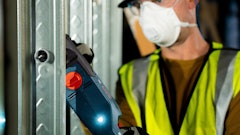
When spec'ing Class 6 and larger trucks, you often need to choose from a menu of powertrain options with varying horsepower and torque ratings. Under-spec the powertrain and productivity suffers while the potential for premature failures increases. Over-spec and you will not maximize your return on investment from the increased purchase price and increased fuel usage.
You want the engine to operate within its peak efficiency power band. Except during initial launch, engine rpms should never drop below the maximum torque point and, in most cases, never rise above the maximum horsepower point. The engine must have the necessary torque to launch the vehicle in a worst-case scenario, and enough horsepower to achieve and maintain the desired road speed with a reasonable reserve.
Torque vs. Horsepower
The two measures that define the engine's power band are horsepower and torque.
"Torque is the most important engine power characteristic for an on/off-highway truck," says Tim Shick, director of engine sales and marketing, Navistar. "Engine torque, or twisting force, launches the truck, pulls the truck up out of an excavating site, accelerates away from a stoplight and up through the gears with city traffic. Horsepower primarily contributes to keeping loads moving at higher speeds such as on an expressway. So horsepower is more valuable to on-highway applications."
Dave McKenna, director of powertrain sales and marketing, Mack Trucks, adds, "Both horsepower and torque are important in an on/off-highway duty cycle operation. Consider a logging tractor that operates between a logging camp and a lumber mill. Gross Combination Weight Ratings can easily be in the 250,000-lb.-plus range. A massive amount of clutch engagement and almost immediate peak torque is required to get the combination moving. Then, a tremendous amount of horsepower is needed to keep it moving at an acceptable road speed."
It is really a balancing act. "Consider both the torque and horsepower, with the torque rise being the primary consideration followed by adequate horsepower to keep the job moving," says McKenna.
"Peak or maximum torque sets the limit on the vehicle's ability to move a load, so it is obviously critical," says Shick. "Assuming the truck has been properly spec'd for the load with appropriate engine peak torque capability, the shape of the torque curve makes the difference between a truck that is easy and satisfying to drive and a truck that merely gets the job done. The broader and flatter the torque curve and the lower the engine speed at torque peak, the better the throttle response."
Compare torque ratings. "Maximum torque is very important and so is where the torque actually occurs," says McKenna. "Between these two points, you would develop the start of a curve followed by the net torque, which is measured at the maximum rated engine speed. These three points largely dictate the shape of the power curve."
For best results, you need an optimized power system with gearing, horsepower and torque matched to your application. Many of the OEMs have become vertically integrated, offering balanced designs with components engineered to work together. But it is not a one-size-fits-all approach.
For example, Mack offers three different engine performance profiles to match a given application: the Maxidyne, MaxiCruise and Econodyne.
"Maxidyne is the most accepted profile in the vocational truck business, with an extremely high torque rise of 60%," says McKenna. "This means high levels of torque at lower engine speeds (around 1,100 rpm), with the right amount of horsepower to keep the truck moving around an unfinished jobsite and for power take-off hydraulic demands. Maximum horsepower is at 1,500 rpm.
"The MaxiCruise is a higher constant speed version of the MaxiDyne," he continues. "We developed this profile for on/off-road use where most of the work is at highway speeds and low-end brute torque and lower engine speed horsepower is not the priority. The engine offers what we call 'hump horsepower,' where there is much more available horsepower at engine cruise speed rpm than at maximum rpm." This profile significantly reduces fuel consumption at cruise rpm.
The Econodyne engine was developed for on-highway-only applications. It features a conventional torque rise of approximately 29% and a horsepower plateau between 1,400 and 1,650 rpm.
New Engines Change Rules
Don't merely assume that what worked in the past is the best solution for today.
"New generation engines provide peak torque at lower engine speeds and broader, flatter torque curves than the engines of five to 10 years ago," says Shick. "Today's 13-liter engines are capable of torque and power output that required a 15-liter engine prior to 2007. These 13-liter engines are lighter and more fuel efficient than the larger 15-liter engines, yet they offer the same durability and life expectation."
"Mack has adopted SCR technology -- our ClearTech system -- to meet the strict U.S. EPA 2010 HDDE emission regulation," says McKenna. "Doing this allowed us to significantly dial back the EGR flow rate, meaning more clean oxygen in the cylinder. The result is a much more efficient combustion process, which increases the power available to the operator at a much lower rpm. We've managed to get the torque value for a given horsepower rating back up to where it was pre-EPA 2002."
Fuel prices have made it necessary to re-examine how you think about power ratings. "If you look back to the late '90s, the engine systems became computerized and horsepower got ridiculously cheap," notes Bob Johnson, director of fleet relations, National Truck Equipment Association. "I can remember in the 1980s if I wanted to go from a 250-hp engine to a 275-hp engine, it cost $1,500 to $2,000. Then came electronic controls and all of a sudden, within certain power bands, the horsepower could be dialed in. Horsepower got real cheap and the cost of fuel was still not an issue."
As a result, he adds, "We just started throwing horsepower at trucks. It didn't cost that much money. Now fuel economy is a major consideration. Even though the horsepower doesn't cost that much, do I really need it? I know of some companies that have actually turned their engines' horsepower ratings back.
"There is a horrible tendency to just go on what worked last time, ignoring the fact that there have been a lot of changes in the industry," he says. "As a result, you end up with a truck that is overpowered. It is going to cost you more money. It is probably going to burn more fuel."
Consider what it really takes to efficiently complete a task. "I think people have unrealistic performance expectations," says Johnson. There are trade-offs, and a smaller engine may provide many advantages. "You will get better tire life. You will typically reduce transmission failures. You will reduce rear-end failures because you are not pushing the vehicle so hard. It makes drivers slow down a little."
Balance Components
The powertrain consists of the engine, transmission and drive/rear-axle ratio. The objective is to fit the right pieces together to perform the assigned task.
"The absolute sweet spot if you are really interested in maximum fuel economy is where the horsepower curve and torque curve cross each other," Johnson states. But arbitrarily gearing the truck for maximum fuel economy may actually hurt overall performance of trucks that run on/off road. "You are not trying to maximize your fuel economy, you are trying to optimize it. Optimizing is more about performance than fuel economy."
Take time to crunch the numbers. "I teach people to back off of the maximum horsepower and maximum rpm of the engine, and do your performance calculations just so you are not running the engine wide open all of the time," says Johnson. "You should end up with around a 5% to 10% reserve in the engine."
When it comes to spec'ing the transmission, Johnson also advises allowing a little reserve. "If an engine is putting out 800 ft.-lbs. of torque, I like to see a transmission that is rated a little higher than 800 ft.-lbs. If you run right at the maximum, you are pushing it. Something will work fine when it is new. But when it gets a little wear and tear and age on it, and you get a little bit of driver abuse, a little buffer protects it." He advises an approximate 5% reserve.
Get Help
Most truck dealers have a computer software program that will match engine ratings, transmission gear ratios and final drive (rear end) gear ratios to achieve the desired performance.
"It is best to use a performance simulation program that all the truck and engine manufactures offer through their dealer and company sales representatives to spec an appropriate vehicle," says Shick. "These programs work through engine torque and power curves to optimize vehicle characteristics. The programs calculate available engine torque and vehicle gearing multiplication to determine startability from rest and gradability while moving as an aid to engine sizing and power ratings."
"Always ask your salesman a lot of questions and make sure they are answered to your complete satisfaction," says McKenna. "Always share all of the information you can about your business and how you plan to use the equipment, and seek recommendations. Engine and drivetrain technologies are evolving very quickly and it can be tough for customers to stay ahead of the newest product offerings. I always recommend doing a lot of research either via the web or through dealer visits."



![Hcm Ax Landcros Dual Branded Logo[25]](https://img.forconstructionpros.com/mindful/acbm/workspaces/default/uploads/2025/11/hcmaxlandcros-dual-branded-logo25.Qhg3vUCjoK.jpg?auto=format%2Ccompress&bg=fff&fill-color=fff&fit=fill&h=100&q=70&w=100)
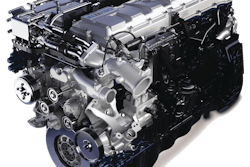



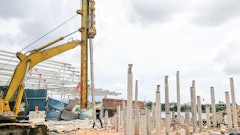

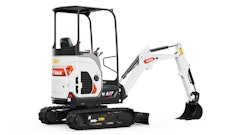
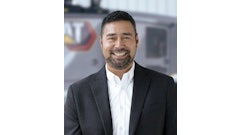
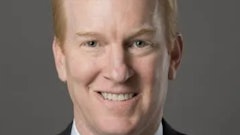
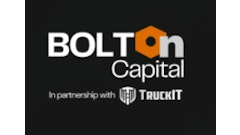
![Hcm Ax Landcros Dual Branded Logo[25]](https://img.forconstructionpros.com/mindful/acbm/workspaces/default/uploads/2025/11/hcmaxlandcros-dual-branded-logo25.Qhg3vUCjoK.jpg?ar=16%3A9&auto=format%2Ccompress&bg=fff&fill-color=fff&fit=fill&h=135&q=70&w=240)



